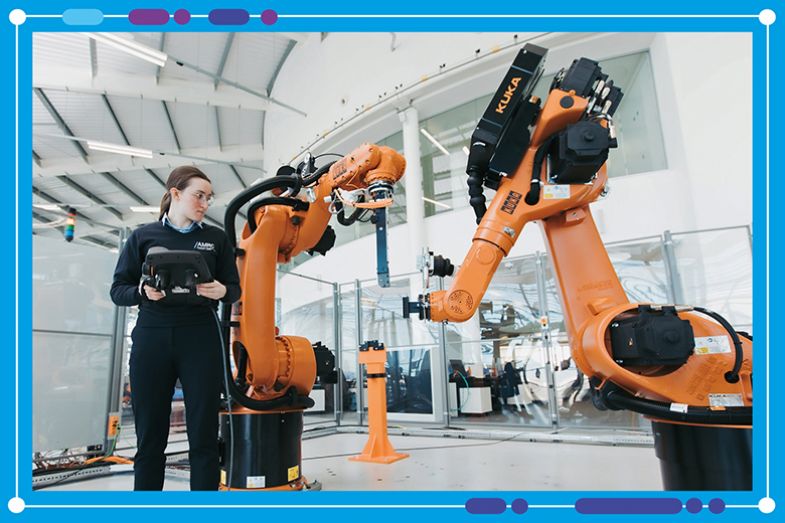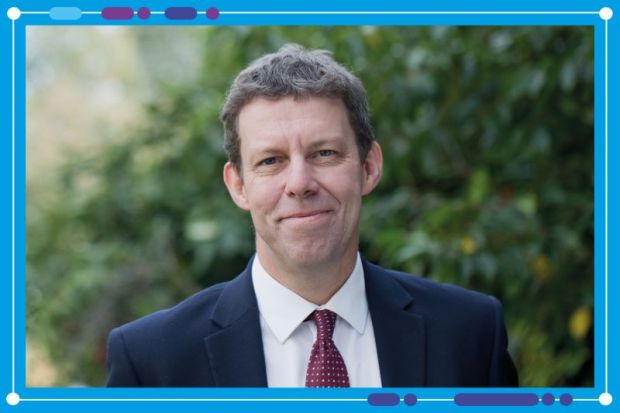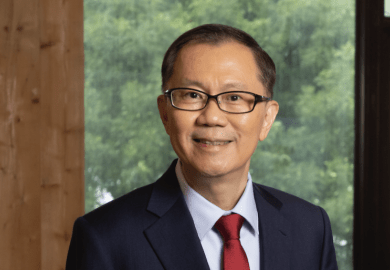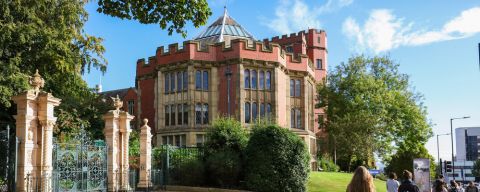Browse the full results of the World University Rankings 2025
Koen Lamberts’ mission since taking the helm at the University of Sheffield five and a half years ago has been to elevate commercialisation to the level of research and education.
At the heart of this innovation strategy is the university’s Advanced Manufacturing Research Centre (AMRC), a research translation hub on the border between Sheffield and Rotherham. The centre was set up more than two decades ago, but, Lamberts says, misperceptions kept it from achieving its full potential.
Many academics in the central university held the ideological view that research should not be driven by commercial interests, while those working in the AMRC were “defensive” about their work, believing “they were the ones in touch with reality. They were doing the work that business wanted and the academic engineers were just interested in writing papers,” he says.
The answer was bringing them together regularly and driving home the message that the AMRC was not a sideshow, “that we actually believed that it was going to be key for carving a distinct identity for the university. That this is what we can do better than anyone else.”
The message appears to have got through. The university is excelling at developing intellectual property, commercialisation and working with business, according to Research England’s Knowledge Exchange Framework.
One example Lamberts highlights is in gene therapy. “Lots of gene therapies actually have been developed in the UK. But in the past they rarely, if ever, led to actual development and manufacturing of therapeutics. That would be done elsewhere,” he says. The basic science would be done in the UK, but manufacturing would happen abroad, often in the US, he explains. Some “visionary scientists” at Sheffield realised they could combine their research with the region’s manufacturing expertise and control the whole production line. The Gene Therapy Innovation and Manufacturing Centre is based at the University of Sheffield Innovation District and has attracted funding from several investors.

But why is this success story the exception rather than the rule, across the UK and beyond? While the reasons are complex, Lamberts says, one factor is a culture that undervalues research for commercial purposes. Another is cash. Funders in the US – a country that is considered highly successful at translational research – are more familiar with working with universities and are more willing to take the risks required. “In the UK, what you find is that traditional venture capitalists are very reluctant to stray far beyond the golden triangle of the south east, Oxford and Cambridge.”
This was the motivation for Northern Gritstone, Lamberts says, the fund established in collaboration with the universities of Manchester and Leeds with the primary purpose of investing in university spin-offs, and which Sheffield has “done remarkably well out of”.
Last year, a review led by Irene Tracey, vice-chancellor of the University of Oxford, and Andrew Williamson, a managing partner of the University of Cambridge’s in-house venture capital fund, highlighted some of the problems holding the UK back from capitalising on university spin-outs. One issue cited was institutions trying to take too big an equity stake and putting off scholars who might otherwise be interested in launching a spin-out.
Lamberts argues that taking a large equity stake is “not always” the wrong thing to do, but ultimately universities should be playing the long game, he says. “This is not about us getting an immediate return from a company that we spin out. This is about creating an environment, a culture, in which innovation just becomes part of what you do.”
Spin-outs are not the answer to university funding either, Lamberts warns. “We have a very challenging funding model [in the UK]. That model is not going to be fixed by commercialisation of research any time soon. It needs far more fundamental reform.”
To encourage academics to take the leap and create spin-offs, universities must make it clear that they will be supported if they return to research, Lamberts believes. While some exit academia forever, many sell or leave their spin-out when it reaches a certain size and then want to return to the academic fold. Their career must not be harmed by having spent time outside of academia, he argues. “I’ve seen that happen. A colleague in my department who stepped out for a couple of years set up a spin-out and then came back, and at the time – this was 20 years ago – we just didn’t have the right mechanisms to acknowledge that contribution.”
Sheffield has changed its promotions criteria so that academics who take a break from publishing papers can gain credit for other activities, such as launching a spin-out. “So you can become a professor in Sheffield if you have primarily focused on contributing to innovation,” he says, adding: “It’s hard because you’re up against the culture. This really is a cultural shift.”
A criticism sometimes levelled at UK universities, and those elsewhere, is that institutional bureaucracy and ponderous decision-making can hinder commercial deals and spin-out progression. Lamberts says this was part of the reason why the AMRC had distanced itself from the central university, and it was one of the challenges he had to take on after becoming vice-chancellor. “There was a real tension in terms of governance,” he says.
The task was to set up a framework with good governance as well as sufficient flexibility and agility to match the pace of the corporate world. “We don’t always get it right. Clearly, there are some areas where contracts are so complex, and the risks are so significant, that we simply have to do the diligence, and that takes more time than a commercial partner would ideally want,” he says. “But on the whole, I think there is now an awareness of the need for us to be agile, flexible, speedy, and especially when the risks are relatively low, we can be very flexible and very fast.” He cites a recent partnership with Boeing as an example of establishing a project with a “very impatient, very ambitious commercial partner”.
Working with Boeing highlights one of the challenges of closer relationships with the corporate world. Sheffield students have been campaigning for the university to end any links to the arms trade, and Boeing is one of the businesses they cite. “Work we do with Boeing is entirely for civilian applications,” Lamberts says. “But of course, they are in the defence sector, and that is seen as a problem by parts of our university community.” Also, “you don’t control what companies do with the research that you supply”, he adds.
The university has a detailed framework that sets out which types of research are and are not permissible. It would be “utterly unthinkable” to manufacture components for weapons, for example, he says. The more ambiguous cases tend to be technology that has the potential to be used in harmful ways, and these types get raised to the university executive board for the go-ahead.
Displeasing some students has not put the university off working with Boeing. In fact, it has started a new joint project using Sheffield academics’ expertise in composites technology to help the company scale up how it manufactures composites-based aircraft components.
The partnership with Boeing led to the company building a factory in Sheffield. Lambert says: “It’s the only European manufacturing facility they’ve got. And they’re not in Sheffield because the weather is lovely.”
rosa.ellis@timeshighereducation.com
This is part of our “Talking leadership” series with the people running the world’s top universities about how they solve common strategic issues and implement change. Follow the series here.
Register to continue
Why register?
- Registration is free and only takes a moment
- Once registered, you can read 3 articles a month
- Sign up for our newsletter
Subscribe
Or subscribe for unlimited access to:
- Unlimited access to news, views, insights & reviews
- Digital editions
- Digital access to THE’s university and college rankings analysis
Already registered or a current subscriber?






